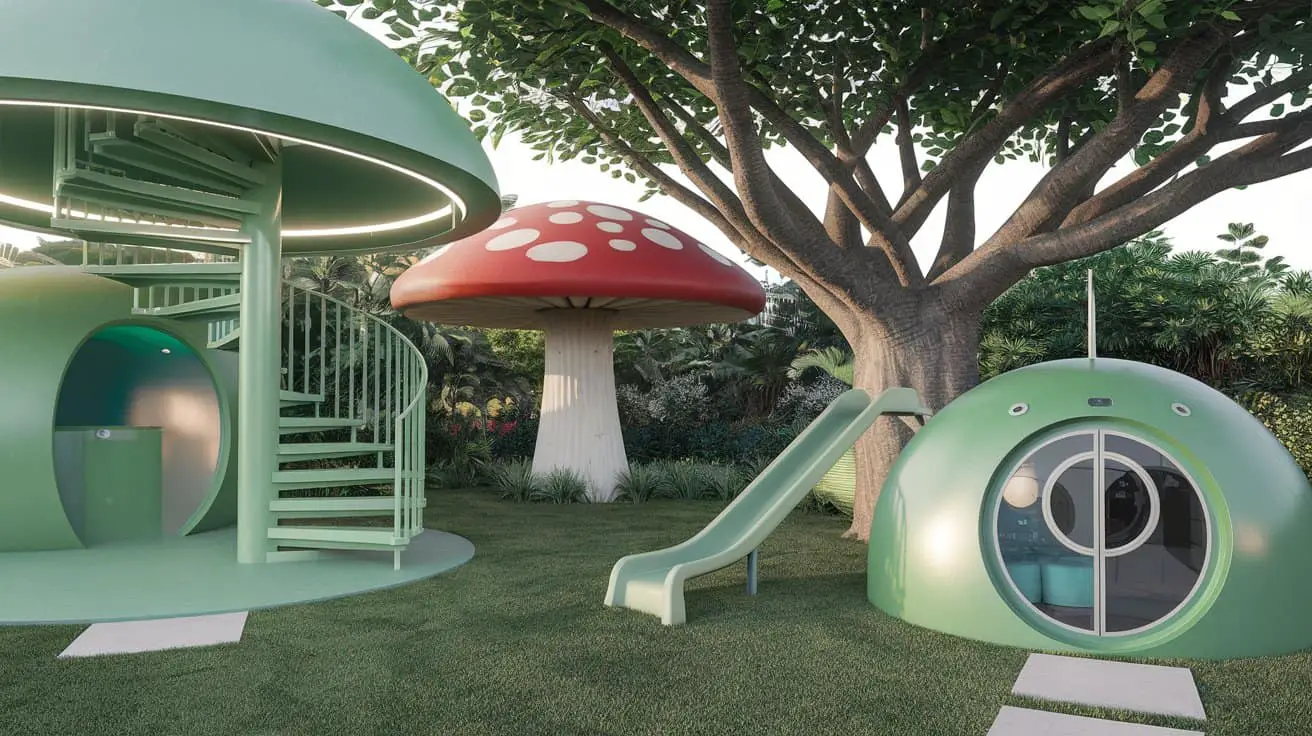
Gardens are no longer just spaces for flowers and greenery; they are evolving into imaginative playgrounds and innovative retreats for children. Futuristic garden designs for kids combine creativity, technology, and sustainability, transforming outdoor spaces into exciting areas for exploration and learning.
These designs incorporate eco-friendly structures, water-inspired elements, and smart features, offering endless possibilities for play, education, and family bonding. From succulent rock gardens to urban park designs, each idea merges aesthetics with functionality. In this blog post, we present ten futuristic garden design ideas tailored for kids, showcasing unique concepts that bring imagination to life. Whether you’re looking to create a whimsical wonderland or a serene eco-haven, these designs will inspire your next backyard transformation.
1. Interactive Smart Play Gardens
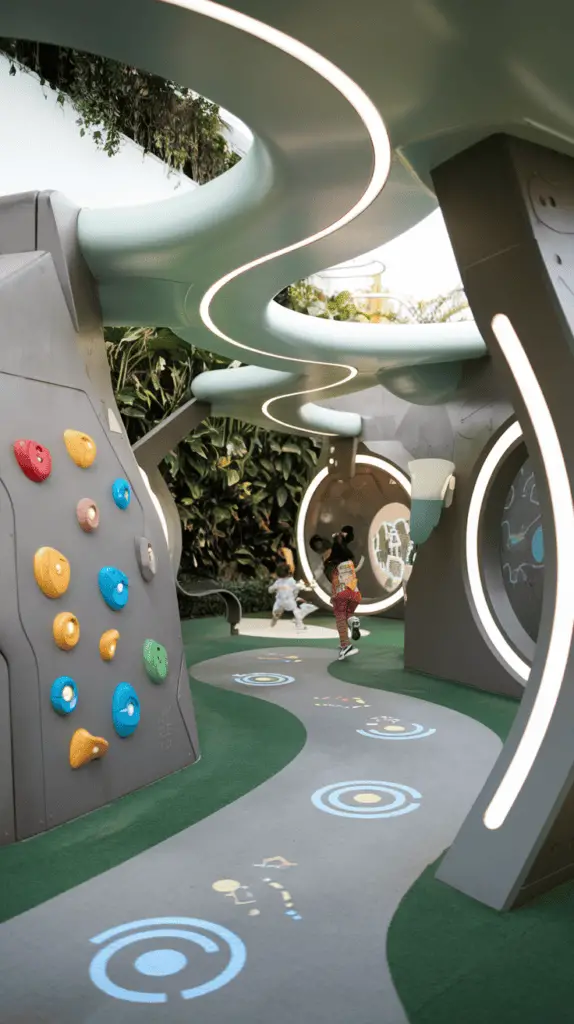
Interactive smart play gardens redefine outdoor fun by integrating technology with nature. These futuristic spaces feature smart play equipment that responds to children’s actions, like sound-activated lights or motion-sensitive water fountains.
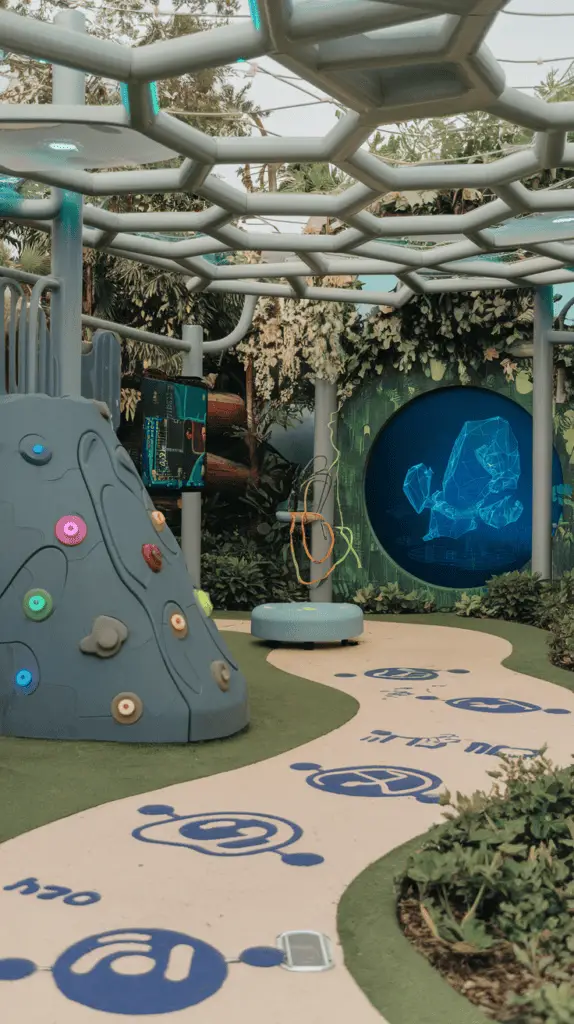
Imagine climbing structures embedded with touch-sensitive panels that light up in various colors, or pathways that play melodies as kids walk or hop along. The garden’s layout can also include AR (augmented reality) zones where children can explore virtual creatures through their tablets or smart glasses.
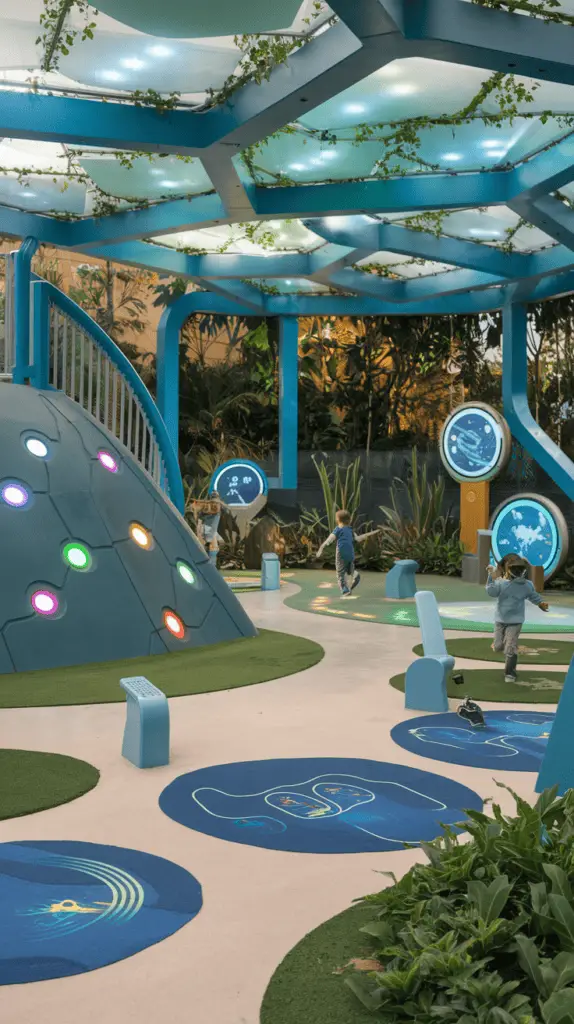
To create this design, start by incorporating smart devices like solar-powered LED panels, motion detectors, and interactive screens. Choose sustainable materials for the play structures, such as recycled wood or eco-friendly composites. Plant drought-resistant greenery around the area and use water-efficient irrigation systems to ensure sustainability. These elements come together to create a fun and environmentally conscious space.
2. Water Wonderland Playgrounds

Water-inspired playgrounds bring a splash of excitement to futuristic gardens. These designs feature shallow pools, splash pads, and interactive water features like mini water wheels or fountains.
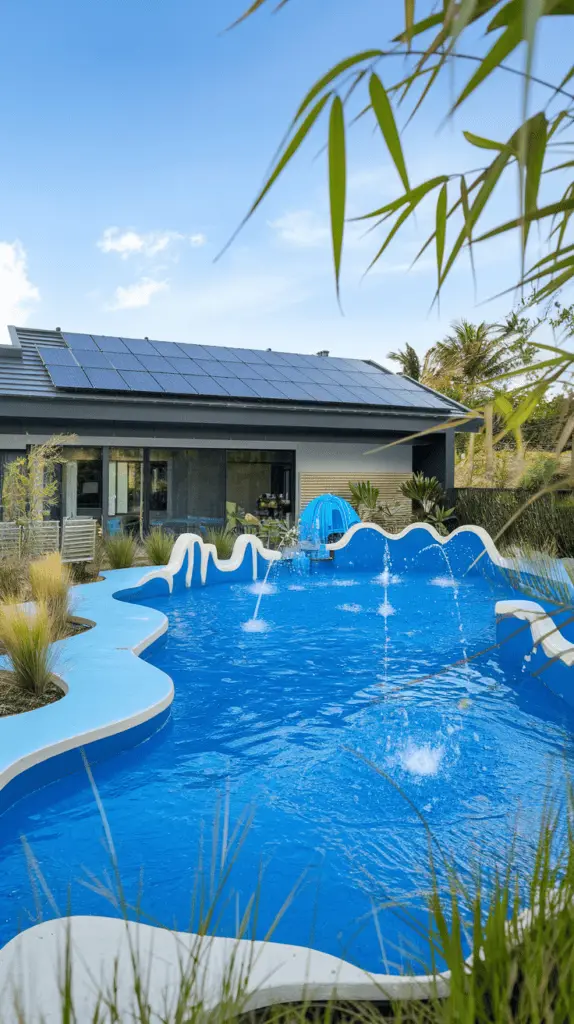
The garden’s aesthetic is enhanced by wave-shaped seating areas, aquamarine tiles, and plants like water lilies or reeds that thrive in wet conditions.

To build a water wonderland, install water features that are safe for kids, such as splash pads with non-slip surfaces. Incorporate filtration systems to ensure clean water and consider adding educational signage about the water cycle. Surround the area with greenery like bamboo or grasses to create a natural aquatic feel, and use solar panels to power the water pumps for an eco-friendly touch.
3. Vertical Adventure Gardens

Vertical adventure gardens utilize walls and vertical spaces to maximize play opportunities. Climbing walls covered in moss or succulents serve as both fun and decorative elements, while vertical planters provide space for children to learn about gardening.

These gardens can include hanging play structures, such as rope bridges or suspended tunnels, that encourage physical activity.
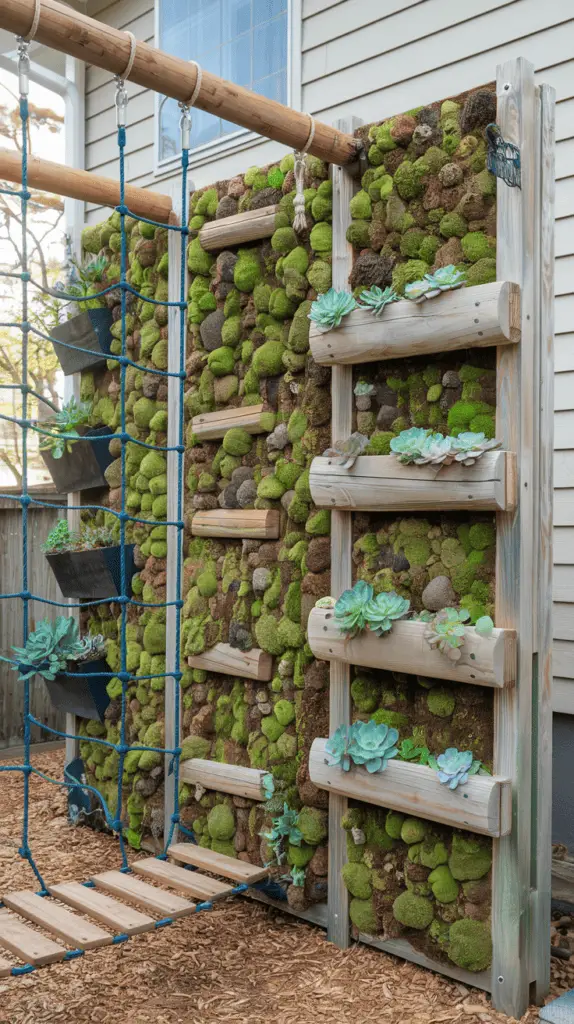
To design a vertical adventure garden, use strong, weather-resistant materials like steel or treated wood for the climbing structures. Incorporate vertical garden walls with built-in irrigation systems to reduce maintenance.
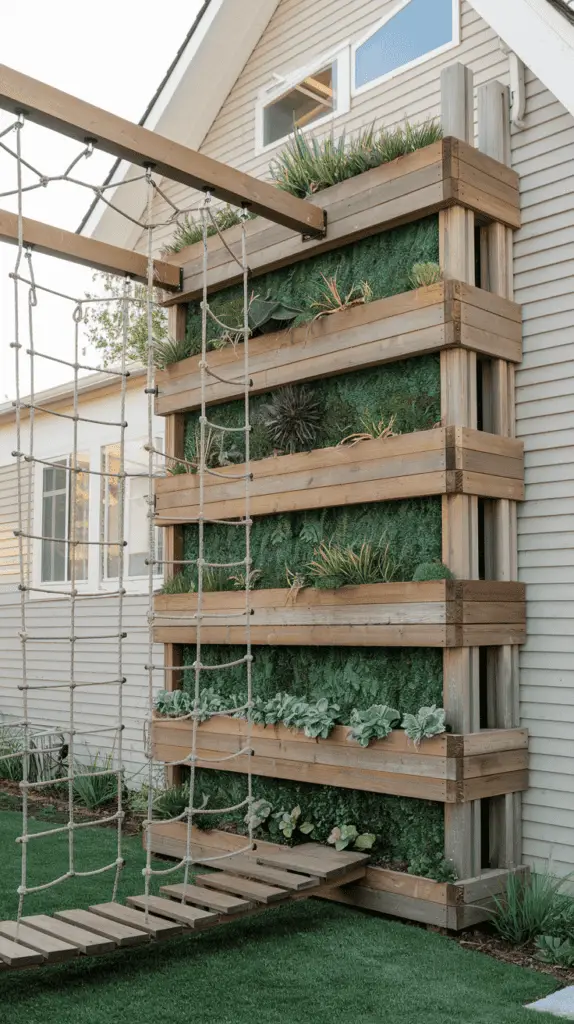
Create pathways using recycled materials like rubber or wood chips for safety, and add colorful elements like murals or LED lighting to make the space visually engaging.
4. Eco Maze Gardens
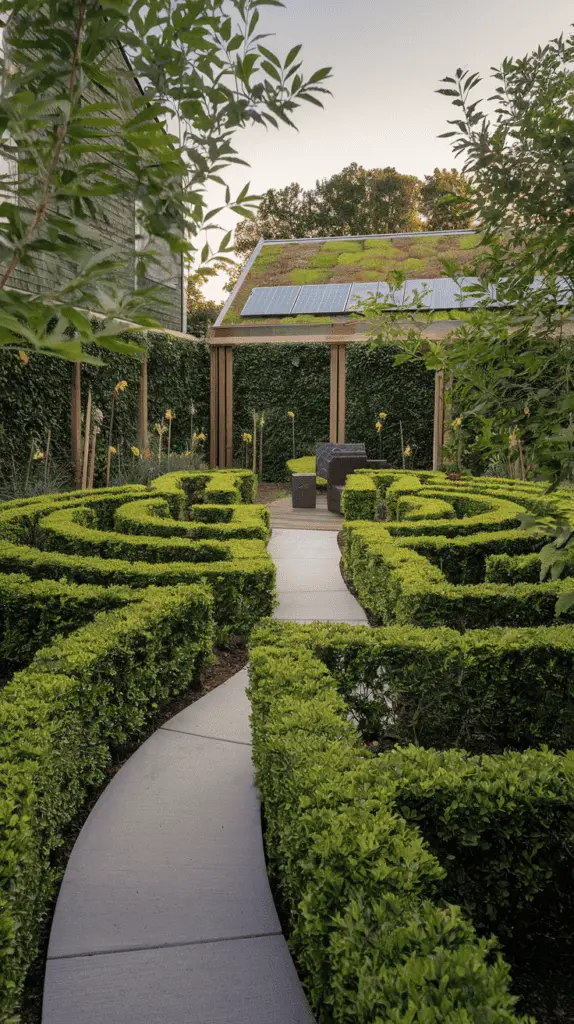
Eco maze gardens combine the thrill of exploration with sustainability. These designs feature winding paths surrounded by hedges, living walls, or solar-powered light panels. Hidden nooks within the maze can include interactive displays or small play structures. At the center, a serene sitting area made of natural materials provides a space for rest and relaxation.

To construct an eco maze garden, choose fast-growing plants like bamboo or shrubs that are easy to shape. Use gravel or wood chips for the pathways and integrate solar-powered lights to illuminate the maze at night. Add educational elements, such as plaques about the plants used, to make the maze an interactive learning experience.
5. Futuristic Greenhouse Play Zones

Greenhouse play zones merge gardening with imaginative play. These futuristic spaces feature glass-domed greenhouses filled with interactive gardening stations, such as touch-sensitive plant beds or robotic watering systems.
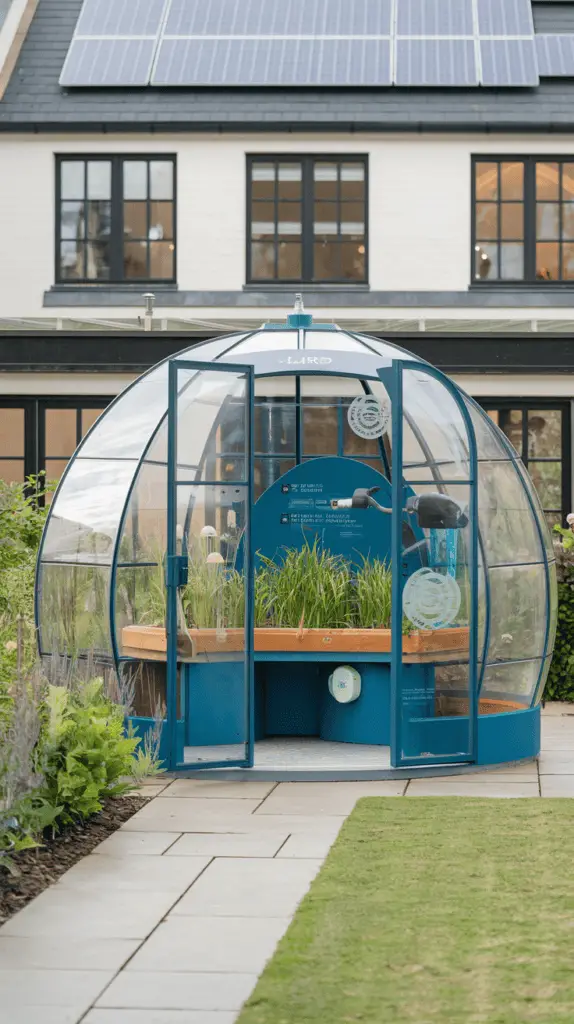
Children can learn about growing plants while engaging in sensory activities like planting seeds or touching interactive displays.

To create a greenhouse play zone, invest in a glass or polycarbonate dome with proper ventilation. Install raised garden beds and use hydroponic systems to grow plants efficiently. Include smart sensors to monitor plant health and display the data on screens for educational purposes. Add cozy seating areas made of sustainable materials to encourage family bonding.
6. Space-Themed Gardens
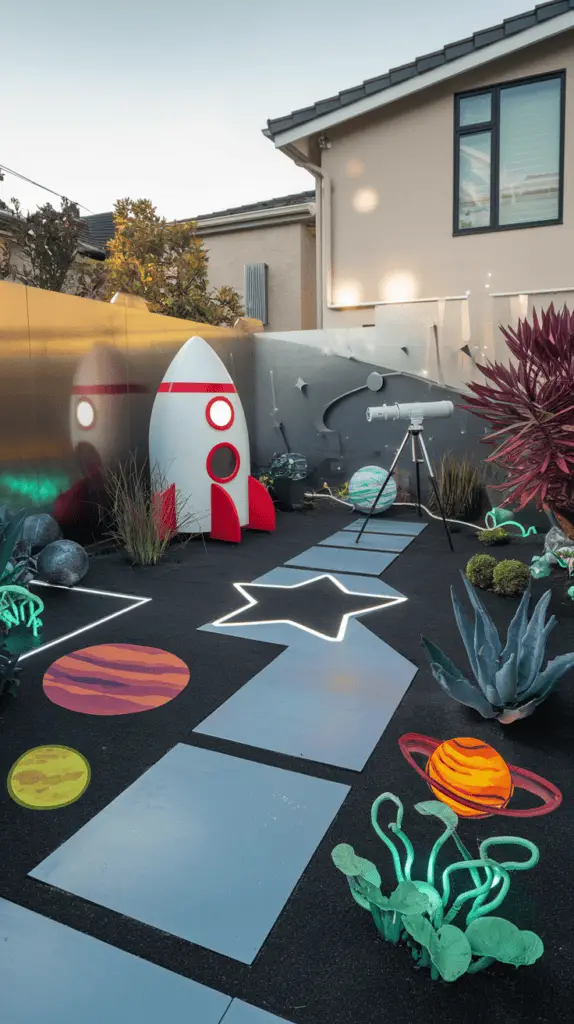
Space-themed gardens transport kids to another world with rocket-shaped playhouses, star-shaped pathways, and glow-in-the-dark plants.
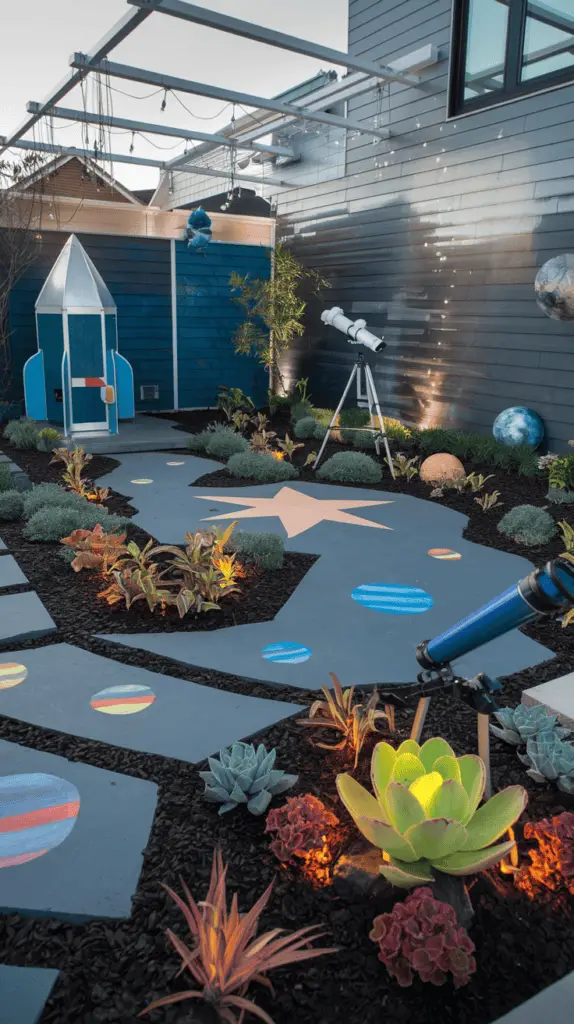
Interactive features like telescopes for stargazing or planets painted on the ground provide an educational twist.
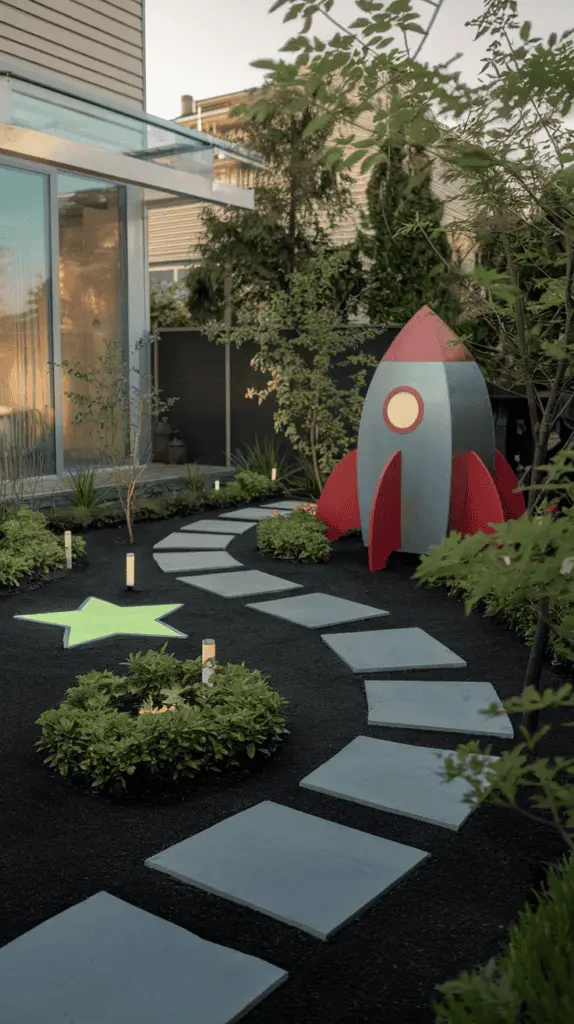
To design a space-themed garden, use materials like metallic paints or reflective surfaces to mimic a cosmic aesthetic.
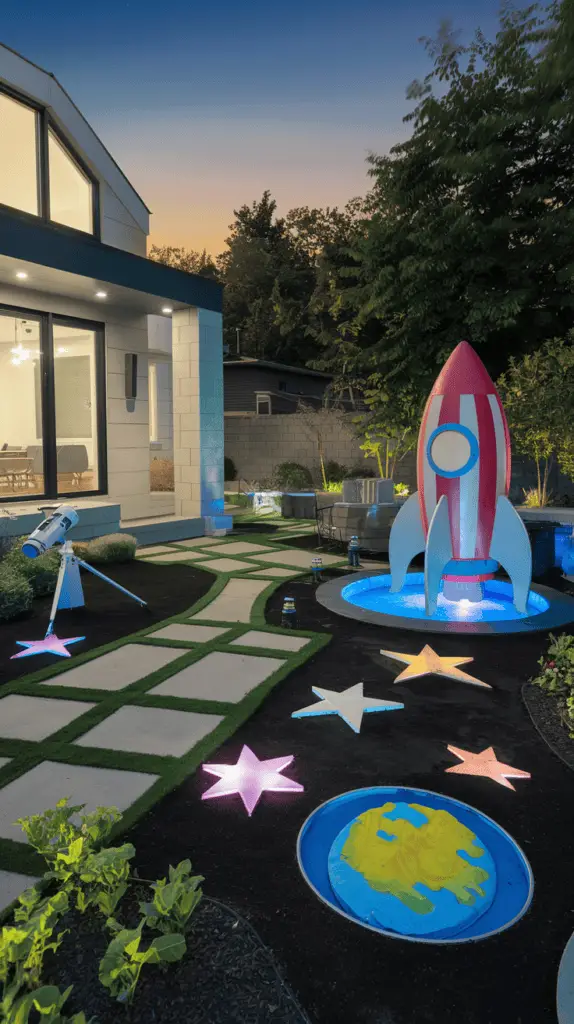
Include futuristic lighting, such as fiber-optic strands woven into the landscaping, and plant species known for their unusual shapes or colors. Create play structures shaped like rockets or planets, and ensure the space is both fun and educational.
7. DIY Succulent Rock Gardens

Succulent rock gardens offer a low-maintenance yet visually stunning option for kids. These gardens use rocks, sand, and succulents to create a miniature desert landscape. Kids can participate in arranging the plants and designing pathways with pebbles or stepping stones.
To build a succulent rock garden, choose drought-resistant succulents and arrange them in clusters around large rocks. Use colored gravel or sand to create distinct zones within the garden. Add small features like fairy houses or animal figurines to make the space more engaging for children.
8. Urban Jungle Parks

Urban jungle parks bring the feel of a dense forest to city backyards.
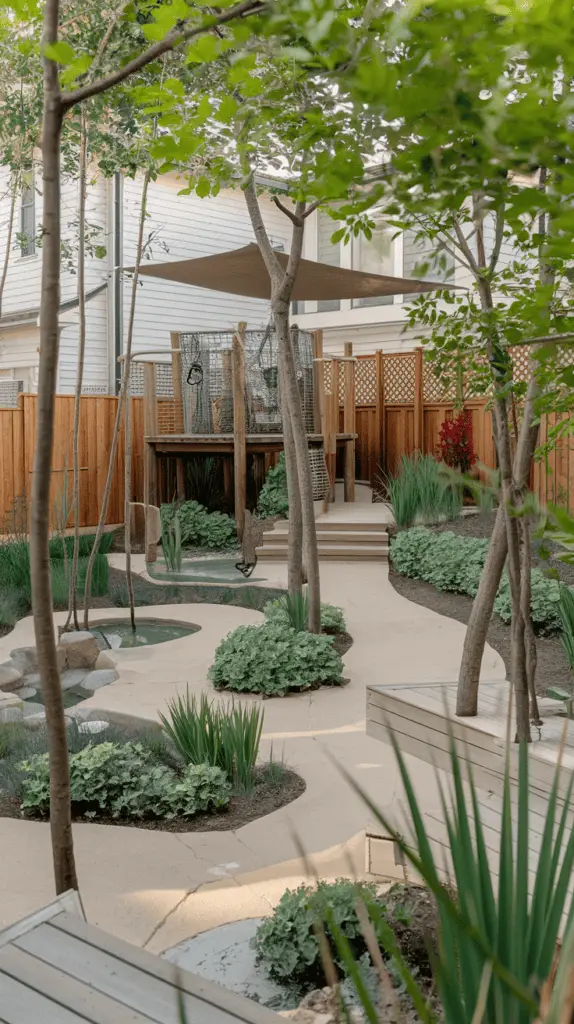
These designs feature tall plants, treehouse-style play structures, and winding paths.

Elevated walkways allow kids to explore from above, while shaded sitting areas provide a relaxing retreat.
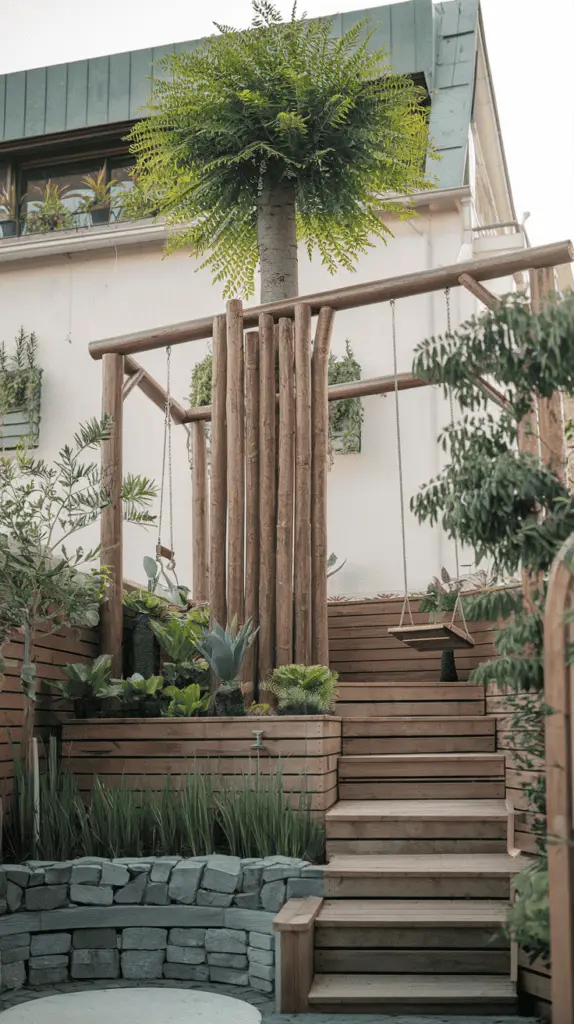
To create an urban jungle park, plant tall trees or fast-growing bamboo for height. Use natural materials like wood or rope for the play structures and add water features like small ponds for an immersive experience. Incorporate seating areas made of stone or reclaimed wood for a sustainable touch.
9. Sensory Exploration Gardens

Sensory gardens stimulate all five senses with fragrant flowers, textured paths, colorful plants, and interactive sound elements like wind chimes. Water features and edible plants enhance the sensory experience, making these gardens both fun and educational.
To design a sensory garden, choose a variety of plants that provide different textures, colors, and scents. Use materials like gravel, sand, and wood chips to create tactile pathways. Add interactive elements like musical instruments or water play areas to engage kids further.
10. Futuristic Sitting Areas for Kids
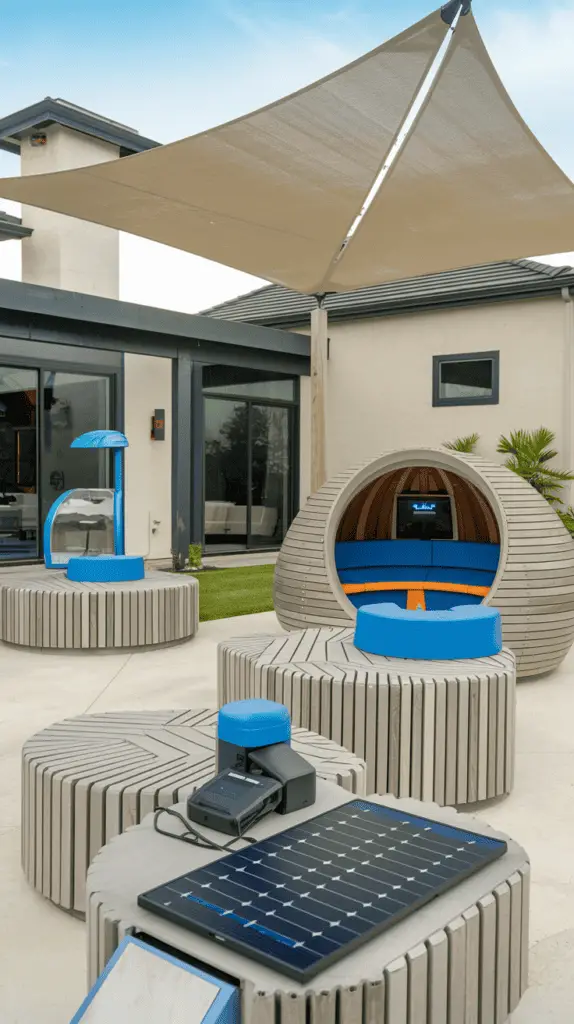
Seating areas designed for kids can be futuristic and fun. Think dome-shaped seating pods, solar-powered charging stations, and retractable shade canopies.
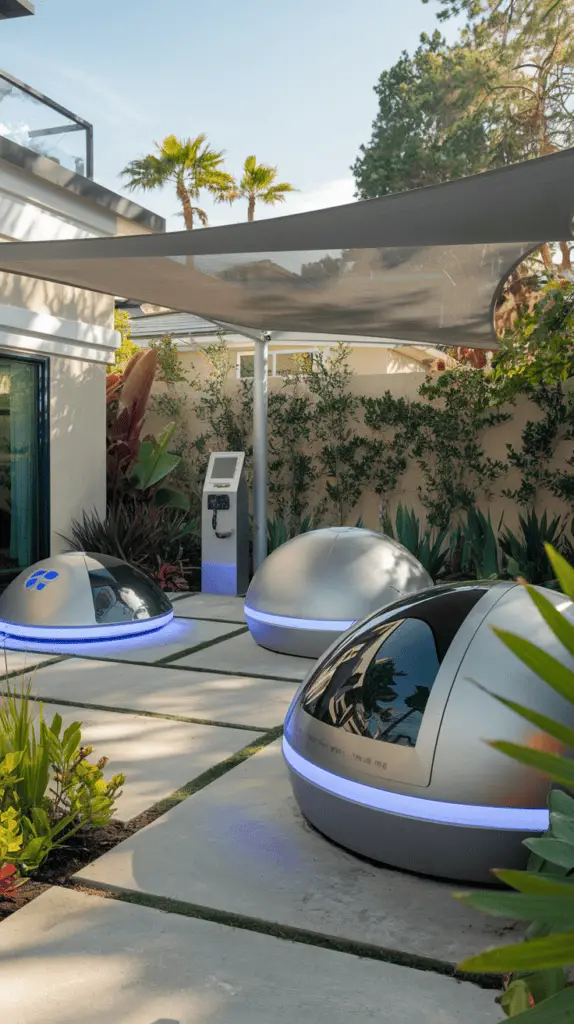
These spaces double as quiet retreats and interactive zones with built-in touchscreens or smart lighting.

To design a futuristic sitting area, use durable, weather-resistant materials like steel or recycled plastic. Incorporate technology like solar-powered lights or USB charging ports. Add bright colors or unique shapes to make the area visually appealing, and include comfortable seating options like beanbags or cushioned benches.
Final Thoughts
Futuristic garden designs for kids blend creativity, education, and sustainability into outdoor spaces that inspire and delight. From interactive play zones to eco-conscious sitting areas, these gardens offer endless opportunities for exploration and learning. By incorporating innovative elements like smart technology, water features, and sustainable materials, you can transform any backyard into a utopian playground.
These ideas not only enrich children’s lives but also foster a deeper connection to nature and the environment. Embrace the future of garden design to create magical spaces where imaginations can soar.
